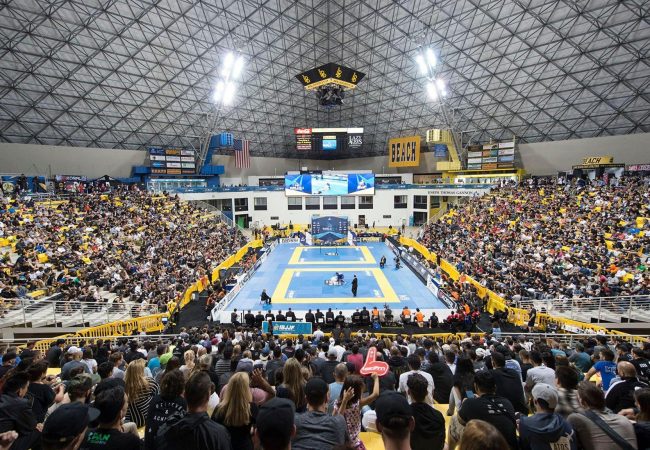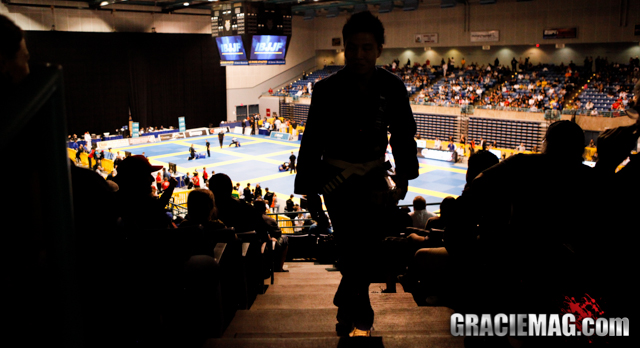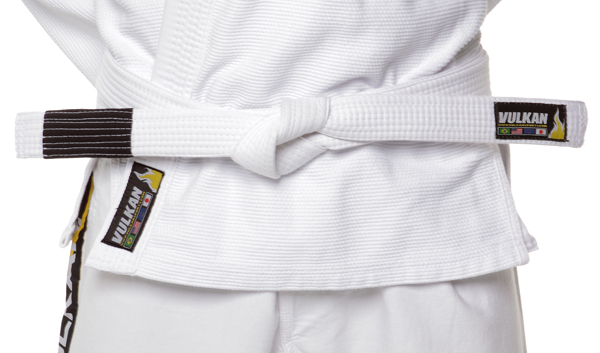GRACIEMAG columnist Alvaro Romano attended the last Jiu-Jitsu World Championship and documented his particular view of the event. Want greater detail about the unforgettable World Championship that inspired Romano? Hurry to get your copy of this month’s GRACIEMAG, and check out the write-up by the physical conditioning coach and Ginástica Natural master.

At the 15th World Championship, masters Penha, Maurição and Jacaré were honored. Photo: Ivan Trindade
June of 2010, World Championship, University of California. I’m seated on the bandstands with my friends, training partners from the academy in Copacabana, all students of Master Rolls Gracie: Maurição Gomes, Zé Beleza, Fabio Santos and Carlinhos Gracie. And I conjure up the memory of our championships at Mello Tennis Club, where we’d compete for a piddling medal, offered as a prize by a mocotó (cow scraps) manufacturer.
Looking around, taking in the grandiose and professional affair championships have transformed into – most notably the World Championship – I got to thinking of the importance of Jiu-Jitsu in the growth and progress of the thousands of people who live the art around the world.
Much more important than the evolution of the sport on the mats is the opportunity this gentle art has proffered on thousands of parents and families who live the sport.
And the image of Grandmaster Carlos Gracie in the Copacabana academy comes to mind, overseeing our training and showing satisfaction for all those kids training under the supervision of Rolls as well as Grandmaster Helio Gracie, who would often show up with Rickson. To us, the students, it was a special day, as the stories and opinions of the two Grandmasters was a lesson in all-around life, not to mention in Jiu-Jitsu techniques.

Seeds of evolution: The first Jiu-Jitsu Pan, in the USA in 1995, the staff at the championship included Dr. José Alfredo Padilha, physical conditioning coach Romano, Macarrão, Carlinhos and Zé Beleza. Photo: Personal archives
Nowadays, I feel that well beyond armbars and choke holds, Jiu-Jitsu brought on change that influenced several generations, and turned into one of Brazil’s most important domestic products. It’s something that contributed to the well-being and upkeep of thousands of families around the world, which through Jiu-Jitsu could provide a good education for their kids and bring about progress for so many people.
Carlos Gracie created a lifestyle that I, as a physical education teacher, have never seen the likes of anywhere around the world – not in training methods, not in taking care of health.
At the last congress on quality of life I participated in in Brazil, I presented some material I put together on Carlos and Helio Gracie, and asked the professionals from the field of health in attendance who knew the story of the two brothers. Only a handful of practitioners of the art professed to have knowledge of them. I thought to myself, “You study, divulge and work using methods from people the world over; know the history of pilates, yoga and so many other methods that address health and quality of life, but you don’t know what these Brazilians did!”
So I started showing awe inspiring photos that demonstrated the flexibility, agility and body control every specialist around these days seeks, and that were already practiced in a completely intuitive manner by these Jiu-Jitsu masters – with lots of creativity and mainly with vision well before their time.
Who in that day and age spoke or knew of flexibility and training like these masters did? The diet and lifestyle Carlos and Helio Gracie practiced so many years ago is as current, modern and effective as they are today for health and quality of life.

Ginastica Natural seminar at 1995 Pan, and with athletes from all academies together
If Brazilians had known about Jiu-Jitsu and studied the lives of the duo, they surely wouldn’t need to wrack their brains looking for a diet or lifestyle to get healthy and in shape like so many do and never find.
Here abroad, there are a lot of folks who don’t get how this sport and philosophy of life isn’t a discipline at Brazilian universities and schools, and why it remains so little-known in the country.
So many projects and so much money is often invested with such little return for our population, so lacking in everything, when the solution is simple: a dojo, good teachers, and spreading the word about these two great Brazilians. It’s not too late for us to start.




